
 “Both Nehru and Ambedkar, as well as their followers, believed by implication that at some point in his life, the Hindu-born renunciate Buddha had broken away from Hinduism and adopted a new religion, Buddhism. This notion is now omnipresent, and through school textbooks, most Indians have lapped this up and don’t know any better. However, numerous though they are, none of the believers in this story have ever told us at what moment in his life the Buddha broke way from Hinduism. When did he revolt against it? Very many Indians repeat the Nehruvian account, but so far, never has any of them been able to pinpoint an event in the Buddha’s life which constituted a break with Hinduism.” – Dr. Koenraad Elst
“Both Nehru and Ambedkar, as well as their followers, believed by implication that at some point in his life, the Hindu-born renunciate Buddha had broken away from Hinduism and adopted a new religion, Buddhism. This notion is now omnipresent, and through school textbooks, most Indians have lapped this up and don’t know any better. However, numerous though they are, none of the believers in this story have ever told us at what moment in his life the Buddha broke way from Hinduism. When did he revolt against it? Very many Indians repeat the Nehruvian account, but so far, never has any of them been able to pinpoint an event in the Buddha’s life which constituted a break with Hinduism.” – Dr. Koenraad Elst
When did the Buddha break away from Hinduism?
Orientalists had started treating Buddhism as a separate religion because they discovered it outside India, without any conspicuous link with India, where Buddhism was not in evidence. At first, they didn’t even know that the Buddha had been an Indian. It had at any rate gone through centuries of development unrelated to anything happening in India at the same time. Therefore, it is understandable that Buddhism was already the object of a separate discipline even before any connection with Hinduism could be made.
In India, all kinds of invention, somewhat logically connected to this status of separate religion, were then added. Especially the Ambedkarite movement, springing from the conversion of Dr. Bhimrao Ambedkar in 1956, was very driven in retro-actively producing an anti-Hindu programme for the Buddha. Conversion itself, not just the embracing of a new tradition (which any Hindu is free to do, all while staying a Hindu) but the renouncing of one’s previous religion, as the Hindu-born politician Ambedkar did, is a typically Christian concept. The model event was the conversion of the Frankish king Clovis, possibly in 496, who “burned what he had worshipped and worshipped what he had burnt”. (Let it pass for now that the Christian chroniclers slandered their victims by positing a false symmetry: the Heathens hadn’t been in the business of destroying Christian symbols.) So, in his understanding of the history of Bauddha Dharma (Buddhism), Ambedkar was less than reliable, in spite of his sterling contributions regarding the history of Islam and some parts of the history of caste. But where he was a bit right and a bit mistaken, his later followers have gone all the way and made nothing but a gross caricature of history, and especially about the place of Buddhism in Hindu history.
The Ambedkarite world view has ultimately only radicalized the moderately anti-Hindu version of the reigning Nehruvians. Under Jawaharlal Nehru, India’s first Prime Minister, Buddhism was turned into the unofficial state religion of India, adopting the “lion pillar” of the Buddhist Emperor Ashoka as state symbol and putting the 24-spoked cakravarti wheel in the national flag. Essentially, Nehru’s knowledge of Indian history was limited to two spiritual figures, viz. the Buddha and Mahatma Gandhi, and three political leaders: Ashoka, Akbar and himself. The concept of cakravarti (“wheel-turner”, universal ruler) was in fact much older than Ashoka, and the 24-spoked wheel can also be read in other senses, e.g. the Sankhya philosophy’s world view with the central Purusha/Subject and the 24 elements of Prakrti/Nature. The anglicized Nehru, “India’s last Viceroy”, prided himself on his illiteracy in Hindu culture, so he didn’t know any of this, but was satisfied that these symbols could glorify Ashoka and belittle Hinduism, deemed a separate religion from which Ashoka had broken away by accepting Buddhism. More broadly, he thought that everything of value in India was a gift of Buddhism (and Islam) to the undeserving Hindus. Thus, the fabled Hindu tolerance was according to him a value borrowed from Buddhism. In reality, the Buddha had been a beneficiary of an already established Hindu tradition of pluralism. In a Muslim country, he would never have preached his doctrine in peace and comfort for 45 years, but in Hindu society, this was a matter of course. There were some attempts on his life, but they emanated not from “Hindus” but from jealous disciples within his own monastic order.
So, both Nehru and Ambedkar, as well as their followers, believed by implication that at some point in his life, the Hindu-born renunciate Buddha had broken away from Hinduism and adopted a new religion, Buddhism. This notion is now omnipresent, and through school textbooks, most Indians have lapped this up and don’t know any better. However, numerous though they are, none of the believers in this story have ever told us at what moment in his life the Buddha broke way from Hinduism. When did he revolt against it? Very many Indians repeat the Nehruvian account, but so far, never has any of them been able to pinpoint an event in the Buddha’s life which constituted a break with Hinduism.
Their first line of defence, when put on the spot, is sure to be: “Actually, Hinduism did not yet exist at the time.” So, their position really is: Hinduism did not exist yet, but somehow the Buddha broke away from it. Yeah, the secular position is that he was a miracle-worker.
Let us correct that: the word “Hinduism” did not exist yet. When Darius of the Achaemenid Persians, a near-contemporary of the Buddha, used the word “Hindu”, it was purely in a geographical sense: anyone from inside or beyond the Indus region. When the medieval Muslim invaders brought the term into India, they used it to mean: any Indian except for the Indian Muslims, Christians or Jews. It did not have a specific doctrinal content except “non-Abrahamic”, a negative definition. It meant every Indian Pagan, including the Brahmins, Buddhists (“clean-shaven Brahmins”), Jains, other ascetics, low-castes, intermediate castes, tribals, and by implication also the as yet unborn Lingayats, Sikhs, Hare Krishnas, Arya Samajis, Ramakrishnaites, secularists and others who nowadays reject the label “Hindu”. This definition was essentially also adopted by V.D. Savarkar in his book Hindutva (1923) and by the Hindu Marriage Act (1955). By this historical definition, which also has the advantages of primacy and of not being thought up by the wily Brahmins, the Buddha and all his Indian followers are unquestionably Hindus. In that sense, Savarkar was right when he called Ambedkar’s taking refuge in Buddhism “a sure jump into the Hindu fold”.
But the word “Hindu” is a favourite object of manipulation. Thus, secularists say that all kinds of groups (Dravidians, low-castes, Sikhs etc.) are “not Hindu”, yet when Hindus complain of the self-righteousness and aggression of the minorities, secularists laugh at this concern: “How can the Hindus feel threatened? They are more than 80%!” The missionaries call the tribals “not Hindus”, but when the tribals riot against the Christians who have murdered their swami, we read about “Hindu rioters”. In the Buddha’s case, “Hindu” is often narrowed down to “Vedic” when convenient, then restored to its wider meaning when expedient.
One meaning which the word “Hindu” definitely does not have, and did not have when it was introduced, is “Vedic”. Shankara holds it against Patanjali and the Sankhya school (just like the Buddha) that they don’t bother to cite the Vedas, yet they have a place in every history of Hindu thought. Hinduism includes a lot of elements which have only a thin Vedic veneer, and numerous ones which are not Vedic at all. Scholars say that it consists of a “Great Tradition” and many “Little Traditions”, local cults allowed to subsist under the aegis of the prestigious Vedic line. However, if we want to classify the Buddha in these terms, he should rather be included in the Great Tradition.
Siddhartha Gautama the Buddha was a Kshatriya, a scion of the Solar or Ikshvaku dynasty, a descendant of Manu, a self-described reincarnation of Rama, the son of the Raja (president-for-life) of the Shakya tribe, a member of its Senate, and belonging to the Gautama gotra (roughly “clan”). Though monks are often known by their monastic name, Buddhists prefer to name the Buddha after his descent group, viz. the Shakyamuni, “renunciate of the Shakya tribe”. This tribe was as Hindu as could be, consisting according to its own belief of the progeny of the eldest children of patriarch Manu, who were repudiated at the insistence of his later, younger wife. The Buddha is not known to have rejected this name, not even at the end of his life when the Shakyas had earned the wrath of king Vidudabha of Kosala and were massacred. The doctrine that he was one in a line of incarnations which also included Rama is not a deceitful Brahmin Puranic invention but was launched by the Buddha himself, who claimed Rama as an earlier incarnation of his. The numerous scholars who like to explain every Hindu idea or custom as “borrowed from Buddhism” could well counter Ambedkar’s rejection of this “Hindu” doctrine by pointing out very aptly that it was “borrowed from Buddhism”.
At 29, he renounced society, but not Hinduism. Indeed, it is a typical thing among Hindus to exit from society, laying off your caste marks including your civil name. The Rigveda already describes the munis as having matted hair and going about sky-clad: such are what we now know as Naga Sadhus. Asceticism was a recognized practice in Vedic society long before the Buddha. Yajnavalkya, the Upanishadic originator of the notion of Self, renounced life in society after a successful career as court priest and an equally happy family life with two wives. By leaving his family and renouncing his future in politics, the Buddha followed an existing tradition within Hindu society. He didn’t practice Vedic rituals anymore, which is normal for a Vedic renunciate (though Zen Buddhists still recite the Heart Sutra in the Vedic fashion, ending with “sowaka”, i.e. svaha). He was a late follower of a movement very much in evidence in the Upanishads, viz. of spurning rituals (karmakanda) in favour of knowledge (jnanakanda). After he had done the Hindu thing by going to the forest, he tried several methods, including the techniques he learned from two masters and which did not fully satisfy him, — but nonetheless enough to include them in his own and the Buddhist curriculum. Among other techniques, he practised anapanasati, “attention to the breathing process”, the archetypal yoga practice popular in practically all yoga schools till today. For a while he also practised an extreme form of asceticism, still existing in the Hindu sect of Jainism. He exercised his Hindu freedom to join a sect devoted to certain techniques, and later the freedom to leave it, remaining a Hindu at every stage.
He then added a technique of his own, or at least that is what the Buddhist sources tell us, for in the paucity of reliable information, we don’t know for sure that he hadn’t learned the Vipassana (“mindfulness”) technique elsewhere. Unless evidence of the contrary comes to the surface, we assume that he invented this technique all by himself, as a Hindu is free to do. He then achieved bodhi, the “awakening”. By his own admission, he was by no means the first to do so. Instead, he had only walked the same path of other awakened beings before him.
At the bidding of the Vedic gods Brahma and Indra, he left his self-contained state of Awakening and started teaching his way to others. When he “set in motion the wheel of the Law” (dharma-cakra-pravartana, Chinese falun gong), he gave no indication whatsoever of breaking with an existing system. On the contrary, by his use of existing Vedic and Upanishadic terminology (Arya, “Vedically civilized”, Dharma), he confirmed his Vedic roots and implied that his system was a restoration of the Vedic ideal which had become degenerate. He taught his techniques and his analysis of the human condition to his disciples, promising them to achieve the same awakening if they practised these diligently.
On caste, we find him is full cooperation with existing caste society. Being an elitist, he mainly recruited among the upper castes, with over 40% Brahmins. These would later furnish all the great philosophers who made Buddhism synonymous with conceptual sophistication. Conversely, the Buddhist universities trained well-known non-Buddhist scientists such as the astronomer Aryabhata. Lest the impression be created that universities are a gift of Buddhism to India, it may be pointed out that the Buddha’s friends Bandhula and Prasenadi (and, according to a speculation, maybe the young Siddhartha himself) had studied at the university of Takshashila, clearly established before there were any Buddhists around to do so. Instead, the Buddhists greatly developed an institution which they had inherited from Hindu society.
The kings and magnates of the eastern Ganga plain treated the Buddha as one of their own (because that is what he was) and gladly patronized his fast-growing monastic order, commanding their servants and subjects to build a network of monasteries for it. He predicted the coming of a future awakened leader like himself, the Maitreya (“the one practising friendship/charity”), and specified that he would be born in a Brahmin family. When king Prasenadi discovered that his wife was not a Shakya princess but the daughter of the Shakya ruler by a maid-servant, he repudiated her and their son; but his friend the Buddha made him take them back.
Did he achieve this by saying that birth is unimportant, that “caste is bad” or that “caste doesn’t matter”, as the Ambedkarites claim? No, he reminded the king of the old view (then apparently in the process of being replaced with a stricter view) that caste was passed on exclusively in the paternal line. Among hybrids of horses and donkeys, the progeny of a horse stallion and a donkey mare whinnies, like its father, while the progeny of a donkey stallion and a horse mare brays, also like its father. So, in the oldest Upanishad, Satyakama Jabala is accepted by his Brahmins-only teacher because his father is deduced to be a Brahmin, regardless of his mother being a maid-servant. And similarly, king Prasenadi should accept his son as a Kshatriya, even though his mother was not a full-blooded Shakya Kshatriya.
When he died, the elites of eight cities made a successful bid for his ashes on the plea: “We are Kshatriyas, he was a Kshatriya, therefore we have a right to his ashes”. After almost half a century, his disciples didn’t mind being seen in public as still observing caste in a context which was par excellence Buddhist. The reason is that the Buddha in his many teachings never had told them to give up caste, e.g. to give their daughters in marriage to men of other castes. This was perfectly logical: as a man with a spiritual message, the Buddha wanted to lose as little time as possible on social matters. If satisfying your own miserable desires is difficult enough, satisfying the desire for an egalitarian society provides an endless distraction from your spiritual practice.
There never was a separate non-Hindu Buddhist society. Most Hindus worship various gods and teachers, adding and sometimes removing one or more pictures or statues to their house altar. This way, there were some lay worshippers of the Buddha, but they were not a society separate from the worshippers of other gods or awakened masters. This box-type division of society in different sects is another Christian prejudice infused into modern Hindu society by Nehruvian secularism. There were only Hindus, members of Hindu castes, some of whom had a veneration for the Buddha among others.
Buddhist buildings in India often follow the designs of Vedic habitat ecology or Vastu Shastra. Buddhist temple conventions follow an established Hindu pattern. Buddhist mantras, also outside India, follow the pattern of Vedic mantras. When Buddhism spread to China and Japan, Buddhist monks took the Vedic gods (e.g. the twelve Adityas) with them and built temples for them. In Japan, every town has a temple for the river-goddess Benzaiten, i.e. “Saraswati Devi”, the goddess Saraswati. She was not introduced there by wily Brahmins, but by Buddhists.
At the fag-end of his long life, the Buddha described the seven principles by which a society does not perish (which Sita Ram Goel has given more body in his historical novel Sapta Shila, in Hindi), and among them are included: respecting and maintaining the existing festivals, pilgrimages and rituals; and revering the holy men. These festivals, etc. were mainly “Vedic”, of course, like the pilgrimage to the Saraswati which Balaram made in the Mahabharata, or the pilgrimage to the Ganga which the elderly Pandava brothers made. Far from being a revolutionary, the Buddha emphatically outed himself as a conservative, both in social and in religious matters. He was not a rebel or a revolutionary, but wanted the existing customs to continue. The Buddha was every inch a Hindu.
› Dr. Koenraad Elst is a Belgian historian, linguist and orientalist without institutional affiliation. He was an editor of the New Right Flemish nationalist journal Teksten: Kommentaren en Studies from 1992 to 1995, focusing on criticism of Islam. He has authored fifteen English language books on topics related to Indian politics and communalism, and is one of the few Western writers (along with François Gautier) to actively defend the Hindutva ideology.
The Twenty-Two Pledges of a Neo-Buddhist
- I will not accept Brahma, Vishnu and Mahesh as God and will not worship them.
- I will not accept Rama and Krishna as God and will not worship them.
- I will not accept Gauri, Ganpati, etc. belonging to Hindu canon, as God / Goddesses and will not worship them.
- I do not have any faith in divine incarnation.
- That the Buddha is the incarnation of Vishnu is a mischievous and false propaganda. I do not believe in it.
- I will not perform Shraddha Paksh or Pinda Pradaana (rituals to respect the dead).
- I will not act contrary to principles and teachings of Buddhism.
- I will not get any function performed in which the Brahmin is officiating as a priest.
- I believe that all human beings are equal.
- I will strive to establish equality.
- I will follow the Eightfold Path prescribed by the Buddha.
- I will abide by the Ten Paramitas prescribed by the Buddha.
- I will show loving kindness to all animals and look after them.
- I will not commit theft.
- I will not commit adultery.
- I will not speak lies.
- I will not indulge in liquor drinking.
- I will live my life by relating pradnya (knowledge), sheel (purity of action) and karuna (compassion).
- I renounce Hinduism which has proved detrimental to progress and prosperity of my predecessors and which has regarded human beings as unequal and despicable; and embrace Buddhism.
- I have ascertained that Buddhism is saddamma (pure way of life).
- I believe that this (embracing Buddhism) is my new birth.
- I take the Pledge that hereafter I shall live / behave as per the teaching of the Buddha.
See also
- Buddha was every inch a Hindu: A reply to those who think Gautama rejected Hinduism – Koenraad Elst
- Bodhidharma in Kanyakumari – Buddhism as a branch of Hinduism existed 2000 yrs BP – Jayasree Saranathan
Filed under: india | Tagged: b.r. ambedkar, buddha, buddhism, hinduism, jawaharlal nehru, v.d. savarkar |


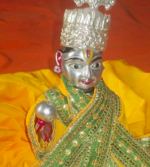






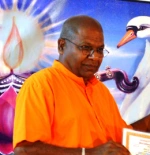

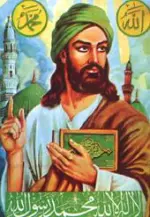
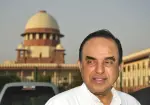
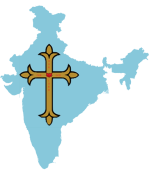







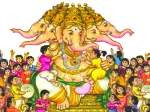



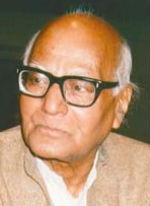






LikeLike
Budha was every inch hindu because he believe in laws of karma, life after birth.
LikeLiked by 1 person
very good
LikeLike
Simple logic will tell us that Buddha was Hindu. He went to meditate. This system of tapasya, sadhna, shat sampat, yoga etc. is a part of Vedic dharma/Sanatan Dharma. Meditation cannot be achieve otherwise. Just like people try to remove problems from society he too was trying the same and had many enemies who tried to kill him. It is ridiculous to make it an ‘issue’ claiming they were two separate religions. Even Ram and later Shankracharyaji did their respective vanavas. Differences are only in the time, style, the way an author writes the story etc. Task remains the same – removing evil, ignorance from society.
LikeLike
Buddha was a Sakya Muni a.k.a.Shramanacharya. They were Mlecchas as mentioned in Mahabharat. They invaded Aryavart after original Aryas slowly went down in numbers. Sri Adi Shankracharya was not happy with whatever Buddhism, Jainism were doing and so the true blue Brahmans put their foot down. One main reason being that Sanatan Dharma involves speaking Sanskrit mantras perfectly. But Buddhism used Pali/Prakrit which has incorrect pronunciations which result in spiritual corruption. In those days they didn’t merely study it as a theory. When doing practicals many issues have to be considered. For example when we study subjects like chemistry, physics etc.its the same point. In fact in any language communication depends on clarity otherwise many problems can arise.
LikeLiked by 1 person
Can you please provide the reference where Buddha says that he is a re-incarnation of Sri Rama. I have found in the Pitakas that he describes himself as Pursuottam (an epithet for Sri Rama) but could not locate the Sutta where he describes himself as reincarnation of Sri Rama explicity.
LikeLiked by 1 person
Very good points made here. Very hard to disagree with. I’d love to see a counter response by someone who disagrees.
LikeLike
Reblogged this on HINDUISM AND SANATAN DHARMA and commented:
Great article from a western author.
LikeLike
Either typical Buddhist ignorance about Hinduism or a missionary attempt to pit Dharmic religions against each other. Here are the actual facts, in order: Buddha was a living person and not a God. The oldest emergence of what was later grouped as Hinduism is the ‘Vedas’ which according to most historians came about a thousand years before Buddha was born. In fact, even Jainism pre-date Buddhism. Buddha didn’t ‘corrected’ or ‘supersede’ anything in Hinduism, he ‘reignited’ the Astik tradition of direct realization over belief and dogma. Mantras are one of the ways in Hinduism to discipline the mind to prepare it for focused understanding, in fact even many Buddhists chant various sutras example ‘heart sutra’ and mantras. Never quote the Jataka as a source – because it also claims many funny & illogical things such as talking animals and Buddha’s previous births. Even if Vedic people ate meat doesn’t mean all of their descendants had to do the same esp. given that they intended their religion to be eternal (that’s why also called ‘Sanatan’) and not rigid. Varna system in Hinduism was originally supposed to be only on the basis of merit, only later it got steeped with vested interests; authors of Ramayana and Gita are instances of individuals born to lower caste parents attaining highest social status in those times.
LikeLiked by 1 person
Buddha didn’t quit Hinduism, says top RSS functionary – Express News Service – New Delhi – July 1, 2014 2:43 am
A top RSS functionary on Monday suggested that Lord Buddha never declared leaving Hinduism to form a new religion. Speaking at a condolence meeting, RSS joint general secretary Krishna Gopal blamed the British for trying to divide Hindu religion.
“Buddhists are not Hindus and Hindus are not Buddhist. There are deep differences between them; that one derives from Vedic traditions while the other follows non-Vedic traditions. Britishers tried to establish these beliefs deeply,” Gopal said at Jhandewalan.
“Buddhist intellectuals know that Lord Buddha remained a Hindu life-long. Never in his life did he declare to have quit Hindu religion or Sanatan religion or Vedic religion to form a new religion or sect. He never said so,” Gopal said. The RSS leader said Buddha only propagated values like mercy, love, compassion, and affection which, in fact, are the essence of Hinduism.
“Slowly, he developed a tradition of meditation. He proceeded on the tradition to overcome misery. Mercy, love, compassion and affection are the essence of Vedic religion, of the entire Hindu religion,” Krishna Gopal said.
“Yes, he distanced from some rituals. He did not address few questions because those issues used to create controversy. Whether God exists, whether aatma is real… questions are not easy to answer in a fashion where everyone could agree. That is why Buddha remained silent,” he said.
LikeLike
An example of the absurd brain-washing some people have suffered at the hands of Neo-Buddhism’s political indoctrinators. Not a single statement or claim made in the comment is true!
LikeLike
Lord Buddha was not a Hindu. Hinduism emerged from anti-Buddhist sects that refused to accept Lord Buddha’s teachings during the decline of Buddhism. Lord Buddha is God. He gave brand new teachings that corrected and superseded Hinduism in every way. Buddha gave the world The Dharma Chakra and is Dharmayana. It was no longer mantrayana (sound based) but based on understanding. This is why he forbade Brahmins from converting texts to chanda. No one during Buddha’s time called themselves Hindu. Vedic people ate beef (read the Jataka). Buddha ate meat, fish. He taught the internal Veda and rejected the external rituals. Buddhism regards karma as higher than birth jati – and in birth jati Kshatriyas not Brahmins are highest. Lord Buddha changed a lot.
LikeLike
When I was growing, I was stifled by the strict, rigid conservative outlook of our clan who had strict views on all religious matters, heavily ritualistic and believed literally in everything that the scriptures and the epics contained. This outlook on life has in my early age created a sense of suffocation. No questions were permitted and there was none to explain us the rationale and the truth, they might have contained. My interest turned towards reforms movements like Brahmo Samaj, agnosticism, atheism, communism and I was slowing getting weaned away from my conservative Brahmin background. But then deep inside I always remained what I was born into. When I studied about renaissance and its history, I thought reforms is the only way out to take me out of this mess. But when my attention turned to the renaissance masters, I found that to bring enlightenment, they all dived deep into their roots, their past instead of looking out. Then I have been bewildered to find that a whole life time is wasted. Like other hindus of my times, I have also subconsciously developed an aversion to many things Hindu, which was reinforced by reading Nehru’s Discovery of India. Buddha and Mahavir were the only historical figures and Kapil, Gautam and other Hindu philosophers were all mythological. The negation of Hindu was complete. After reading the “Buddha was every inch a Hindu” article, I became more acutely aware of what I have lost. All the material is available and only an eye is missing to explore the truth.
LikeLiked by 1 person
Today Budhha is a weapon used by secularists & Ambedkarist against hindu nationalists.Ancient times there was a struggle betn Vedic tradition against Budhhism & Jainism, Dr Ambedkar clearly says in 1951 on the speech that Hindu law is applicable to both Hindu,Budhhist,Jains,Sikhs as there may be philosophical differences betn them. All these faiths adopted Vedic literature & terminology and traditions,there founders,desiples and followers were from Vedic tradition hence Dr Elst is true that in India Budhha,Jain,Sikh sects are hindu.
LikeLiked by 1 person
One interesting aspect of Buddhism and Jainism do not sing paens about Rama but are charitable to Krishna. Remember the controversy over AK Ramanujams Ramayana. He relied on Buddhist and Jain sources. The idea of Buddhism and Jainism was to oppose the Kshatriya class , since war had taken a heavy toll of lives. In fact there is plenty of borrowings in Buddhism from Upanishads and Rishi Atharvans treatise in Jainism. Buddhism has different take in Jataka tales are given from the perspective of Buddha’s previous lives (as well as the previous lives of many of Buddha’s followers), Krishna appears as one of the lives of Sariputra, one of Buddha’s foremost disciples and the “Dhammasenapati” or “Chief General of the Dharma” and is usually shown being Buddha’s “right hand man” in Buddhist art and iconography. In jainism Krishna was a cousin of the twenty-second Tirthankara, Neminatha. The stories of these triads can be found in the Harivamsha of Jinasena (not be confused with its namesake, the addendum to Mahābhārata) and the Trishashti-shalakapurusha-charita of Hemachandra.
Even though Buddhism and Jainism were an anti thesis over Kshatryias , they take in Krishna as their Biradari , though hard to believe that Krishna existed during or after Buddha and Mahavir as both Buddhism and Jainism are faiths of Kalyug and Krishna had left his mortal coils ages before them. Is it that both Mahavir and Buddha and their followers liked Krishna for His great chivalry to keep in semblance of Kshatriya activity.( since Mahavir and Buddha were kings, Naipaul comes in handy here when he says that converts reject their origins by impulse in Among the Believers ) Jains had problems with Krishna as they believed in pacifist and non violence , but later made Krishna the cousin of Neminatha and Buddhism accommodated Krishna as Buddhas disciple ( a kalpa difference in time , how could Krishna be Buddhas disciple or how could Krishna be the cousin of Neminatha?)
This shows that even though Buddhism and Jainism were in Kalyug , they could not forgo Lord Krishna , but accommodated Krishna according to their convenience. otherwise a yug in difference , how could such an interpretation come to force.
This enforces Konrad Elst’s premise that Buddha was every inch a Hindu. It could be added that even Mahavir also was every mm a Hindu.
LikeLiked by 1 person
A very interesting and relevant article. It is still erroneously held by many literate Indians that the religion of South India was Buddhism and Jainism at one time, particularly Kerala, where the Brahmans later brought Hinduism and destroyed these former religions. There are ruins of Buddhist and Jain monasteries strewn in the high hills, which the Nehruvian narrators interpret as being destroyed by Brahmans under Adi Sankara. A credible Malayalam source points out that those who became Buddhist monks and followers were Brahman scholars who were the only ones who could read Buddhist writings in Sanskrit. Like Dr. Elst says, the initial followers of Buddha were Brahmans and Kshatriyas, and the earliest writings on Buddha are in Sanskrit, even though Buddha spoke the common tongue. In India, Buddhism was a predominantly monastic tradition, whereas when it went outside the Indian cultural milieu, it assumed a different character.
LikeLiked by 1 person
A scholarly account of a much distorted subject, the relationship of Siddhartha with his Hindu ancestry. It sets the record straight. I am not aware of a recent such account and Dr. Elst has done a great service to Hindus.
LikeLiked by 1 person